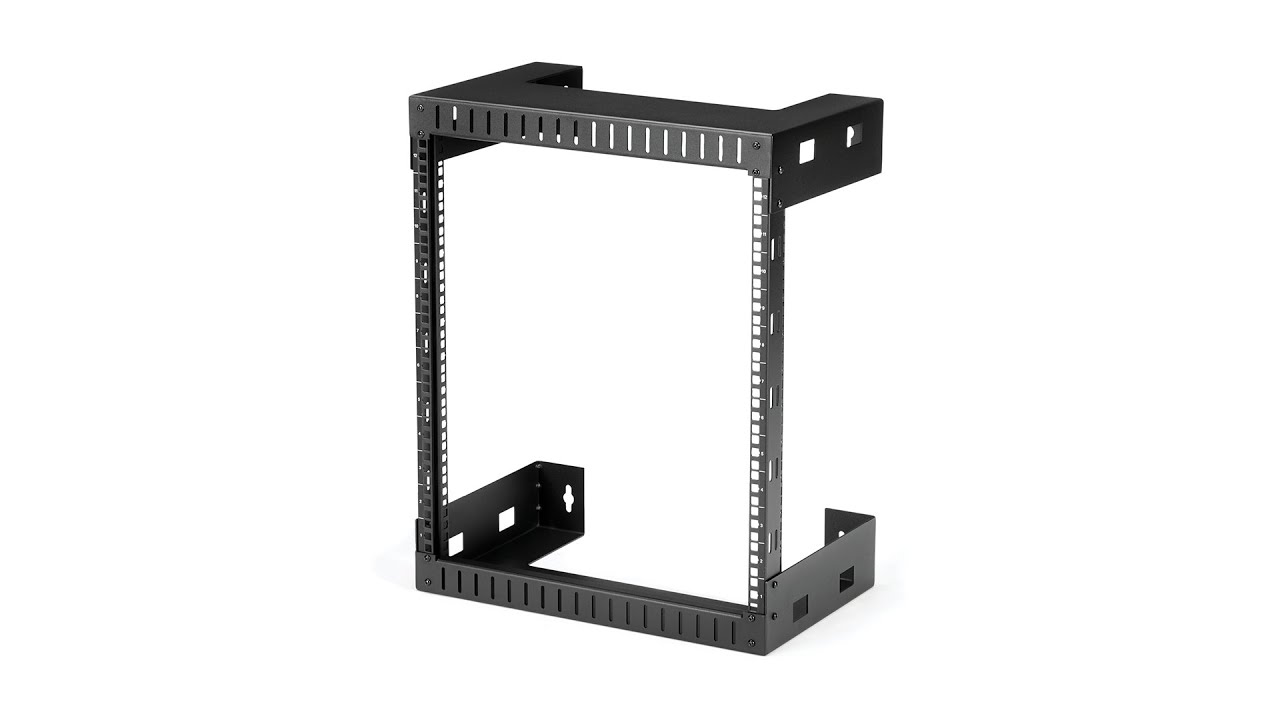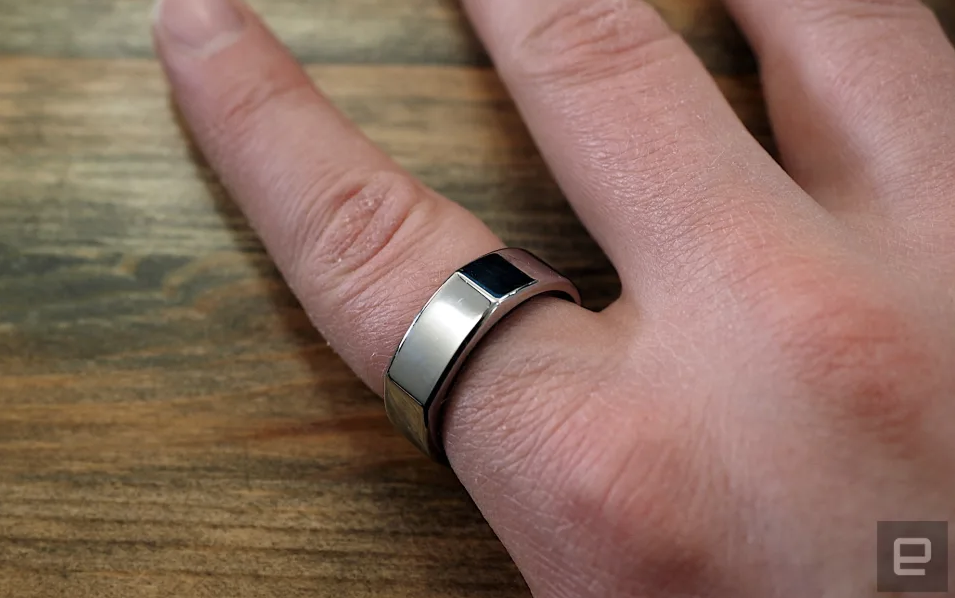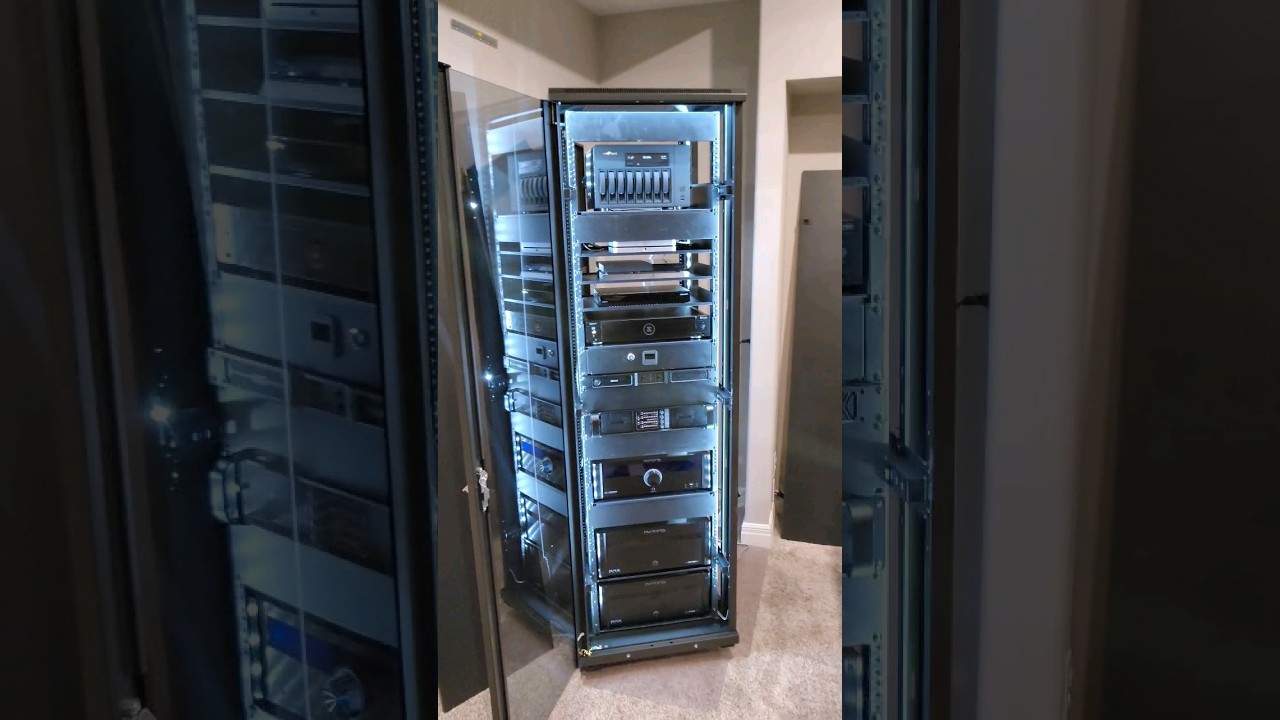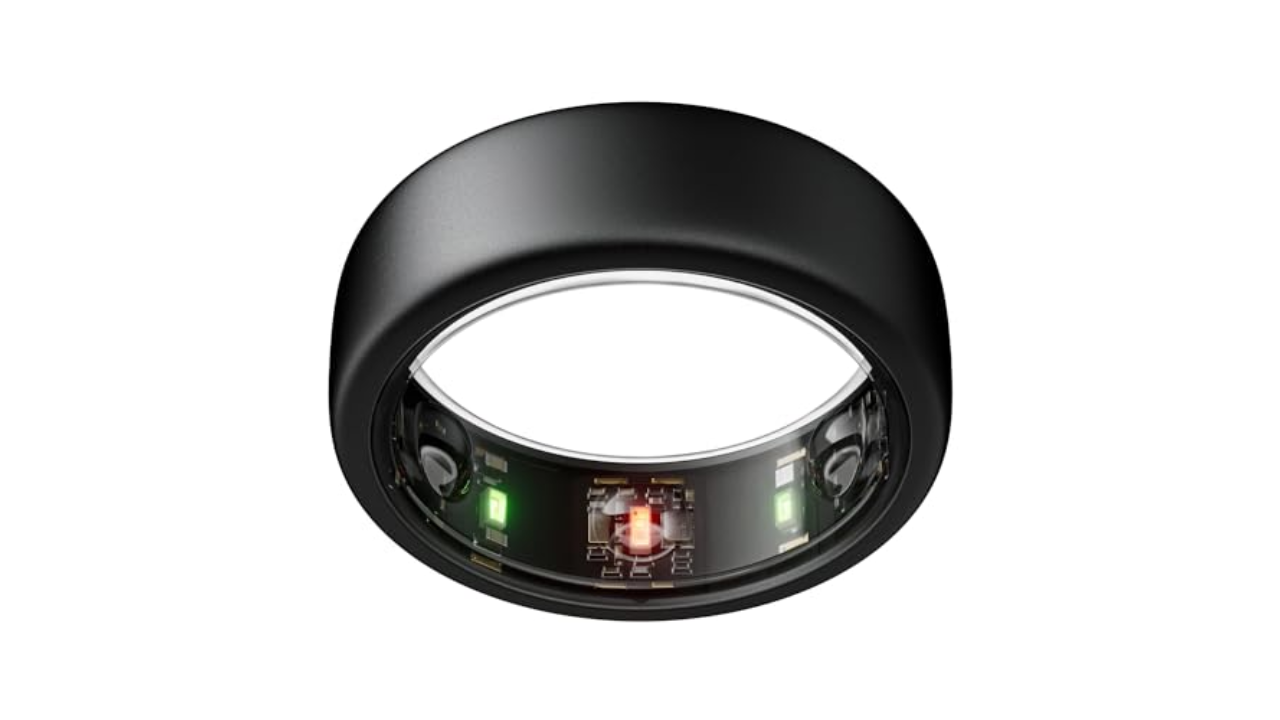Tech giants are increasingly eyeing nuclear reactors to power their energy-hungry data centers. Amazon and Microsoft each inked major deals this year with nuclear power plants in the US. And both Microsoft and Google have shown interest in next-generation small modular reactors that are still in development.
Technology
Big Tech has cozied up to nuclear energy

New AI data centers need a lot of electricity, which has taken companies further away from their climate goals as their carbon emissions grow. Nuclear reactors could potentially solve both of those problems. As a result, Big Tech is breathing new life into America’s aging fleet of nuclear reactors while also throwing its weight behind emerging nuclear technologies that have yet to prove themselves.
“Certainly, the prospects for this industry are brighter today than they were five and 10 years ago,” says Mark Morey, senior adviser for electricity analysis at the US Department of Energy’s Energy Information Administration.
“Certainly, the prospects for this industry are brighter today”
Much of America’s aging nuclear fleet came online in the 1970s and 1980s. But the industry has faced pushback following high-profile accidents like Three Mile Island and the Fukushima disaster in Japan. Nuclear power plants are also expensive to build and generally less flexible than gas plants that now make up the biggest chunk of the US electricity mix. Gas-fired power plants can more quickly ramp up and down with the ebb and flow of electricity demand.
Nuclear power plants typically provide steady “baseload” power. And that makes it an attractive power source for data centers. Unlike manufacturing or other industries that operate during daytime business hours, data centers run around the clock.
“When people are sleeping and offices are shut and we’re not using as much [electricity], what matches nuclear energy very nicely with data centers is that they pretty much need power 24/7,” Morey says.
That consistency also sets nuclear apart from wind and solar power that wane with the weather or time of day. Over the past five years or so, many tech companies have accelerated climate goals, pledging to reach net zero carbon dioxide emissions.
The added energy demand from new AI tools, however, has put those goals further out of reach in some cases. Microsoft, Google, and Amazon have all seen their greenhouse gas emissions climb in recent years. Getting electricity from nuclear reactors is one way companies can try to bring those carbon emissions down.
A feat that’s never been done before in the US
Microsoft signed an agreement to purchase power from shuttered Three Mile Island in September. “This agreement is a major milestone in Microsoft’s efforts to help decarbonize the grid in support of our commitment to become carbon negative,” Microsoft VP of energy Bobby Hollis said in a press release at the time.
The plan is to revive the plant by 2028, a feat that’s never been done before in the US. The plant “was prematurely shuttered due to poor economics” in 2019, according to Joe Dominguez, president and CEO of the company, Constellation, that owns the plant. But the outlook for nuclear energy now is rosier than it has been for years as companies look for carbon pollution-free sources of electricity.
In March, Amazon Web Services purchased a data center campus powered by the adjacent Susquehanna Nuclear power plant in Pennsylvania. That $650 million deal secures electricity from the sixth largest nuclear facility in the US (out of 54 sites today).
Google is considering procuring nuclear energy for its data centers as part of its sustainability plans. “Obviously, the trajectory of AI investments has added to the scale of the task needed,” CEO Sundar Pichai said in an interview with Nikkei this week. “We are now looking at additional investments, be it solar, and evaluating technologies like small modular nuclear reactors, etc.”
He’s referring to next-generation reactors that are still in development and not expected to be ready to connect to the power grid until the 2030s at the earliest. The US Nuclear Regulatory Commission certified a design for an advanced small modular reactor for the first time last year. These advanced reactors are roughly one-tenth to one-quarter the size of their older predecessors; their size and modular design are supposed to make them easier and cheaper to build. They might also be more flexible than larger nuclear plants when it comes to adjusting how much electricity they produce to match changes in demand.
Bill Gates, for one, is all in on nuclear energy. He’s the founder and chair of TerraPower, a company developing small modular reactors. Last year, Microsoft put out a job listing for a principal program manager to lead the company’s nuclear energy strategy that would include small modular reactors.
Bill Gates, for one, is all in on nuclear energy
“I’m a big believer that nuclear energy can help us solve the climate problem, which is very, very important,” Gates said in an interview with The Verge last month.
This week, the Department of Energy released a new report projecting that US nuclear capacity could triple by 2050. After flatlining for years, electricity demand is expected to rise in the US thanks to EVs, new data centers, crypto mining, and manufacturing facilities. That growing demand is changing the outlook for nuclear energy, according to the report. Just a couple years ago, utilities were shutting down nuclear reactors. Now, they’re extending reactors’ lifetimes by up to 80 years and planning to restart ones that have shuttered, it says.
“It is reasonable to think that the tech companies could catalyze a new wave of investment in nuclear, in the US and around the world. There has been plenty of talk about the idea in the industry,” Ed Crooks, Wood Mackenzie senior vice president, thought leadership executive for the Americas wrote in a blog post this week.
This doesn’t necessarily mean that it’s all smooth sailing ahead for nuclear energy in the US. New reactor designs and plans to reopen shuttered nuclear power plants are still subject to regulatory approval. Initiatives to build both old-school power plants and new designs have faced soaring costs and delays. Amazon already faces opposition to its nuclear energy plans in Pennsylvania over concerns that it could wind up driving up electricity costs for other consumers. And the nuclear energy industry still faces pushback over the impact of uranium mining on nearby communities and concerns about where to store radioactive waste.
“It’s an interesting time, challenging in many ways,” Morey says. “We’ll see what happens.”
Technology
NYT Strands today — hints, answers and spangram for Sunday, October 6 (game #217)

Strands is the NYT’s latest word game after the likes of Wordle, Spelling Bee and Connections – and it’s great fun. It can be difficult, though, so read on for my Strands hints.
Want more word-based fun? Then check out my Wordle today, NYT Connections today and Quordle today pages for hints and answers for those games.
SPOILER WARNING: Information about NYT Strands today is below, so don’t read on if you don’t want to know the answers.

NYT Strands today (game #217) – hint #1 – today’s theme
What is the theme of today’s NYT Strands?
• Today’s NYT Strands theme is… Got any bleu cheese?
NYT Strands today (game #217) – hint #2 – clue words
Play any of these words to unlock the in-game hints system.
- LATE
- GLADE
- BLADE
- NICK
- CHICK
- TOAST
NYT Strands today (game #217) – hint #3 – spangram
What is a hint for today’s spangram?
• Food in rows
NYT Strands today (game #217) – hint #4 – spangram position
What are two sides of the board that today’s spangram touches?
First: top, fourth column
Last: bottom, fifth column
Right, the answers are below, so DO NOT SCROLL ANY FURTHER IF YOU DON’T WANT TO SEE THEM.
NYT Strands today (game #217) – the answers

The answers to today’s Strands, game #217, are…
- BACON
- CHICKEN
- TOMATO
- VINAIGRETTE
- GREENS
- EGGS
- SPANGRAM: COBBSALAD
- My rating: Moderate
- My score: Perfect
I presume there might be a split between people in the US and those in the rest of the world here. Or maybe it’s only me that had not really heard of a COBBSALAD and therefore struggled to solve this one. I was also very confused by the theme clue of ‘Got any bleu cheese?’, which made me think it was something French – because otherwise why is it spelled ‘bleu’ and not ‘blue’. So the whole thing was a bit baffling.
I solved it in the end, but it was really just a case of trial and error. I spotted BACON early on, and CHICKEN too, so I realized it was a food-themed puzzle. The others took me a while to find, and getting the spangram was entirely based on there being nothing else it could be by the time that I got it. Not the most satisfying game for me – though if you know and like Cobb Salad (which to me sounds disgusting) then maybe you’ll have been fine with it. Ho hum.
How did you do today? Send me an email and let me know.
Yesterday’s NYT Strands answers (Saturday 5 October, game #216)
- SHAM
- FAKE
- QUACK
- PHONY
- HOAK
- CHARLATAN
- HUMBUG
- SPANGRAM: THATSUNREAL
What is NYT Strands?
Strands is the NYT’s new word game, following Wordle and Connections. It’s now out of beta so is a fully fledged member of the NYT’s games stable and can be played on the NYT Games site on desktop or mobile.
I’ve got a full guide to how to play NYT Strands, complete with tips for solving it, so check that out if you’re struggling to beat it each day.
Servers computers
Home Theater Rack from NavePoint! 42U Equipment Rack #hometheater #navepoint
Technology
If you’ve ever considered smart glasses, this Amazon deal is for you


One look at our list of Amazon Echo deals is likely enough to inform you that there is no shortage of Alexa-powered smart speakers and touchscreen displays to choose from. But the fun doesn’t stop when you leave the home! Thanks to Amazon’s dedication to all things tech, you’ll be able to pick up a pair of Amazon Echo Frames for improved eyesight and a bevy of other great features.
As a matter of fact, when you order the Amazon Echo Frames (3rd Gen) through Amazon, you’ll knock $100 off these $300 glasses, but only for a limited time.
Why you should buy the Amazon Echo Frames (3rd Gen)
This iteration of the Echo Frames uses blue light filtering to reduce how much strain your pupils experience when viewing phone, tablet, TV, and laptop screens. These lenses also contain an anti-glare seal for keeping ambient light at bay.
One of the premiere features of the Echo Frames (3rd Gen) is that they’re equipped with an open-ear audio system. Sound is directed to your ears via the Frames, and noise-canceling tech kicks in during phone calls to ensure the person you’re talking to hears you loud and clear. Speaking of which, you can use the Frames to make calls, and even for listening to music and podcasts.
Available in a number of fantastic styles, you’ll be able to order these glasses with several different lens types, too. The latest generation of this device includes revamped temple button controls (as opposed to the touchpad on older models), Bluetooth Multipoint, and expanded battery life. Oh, and it also comes with a nifty wireless charger!
It’s hard to say how long this markdown is going to last, but Amazon deals like this one may not stick around for long. Not to mention, we’re right in the throes of Amazon’s October Big Deal Day pre-savings, which means the Echo Frames could potentially sell out. That being said, now could be the best time to save $100 on the Amazon Echo Frames (3rd Gen).
And if you’re a big fan of wearable tech, you should take a gander at the best smartwatch deals we’ve been keeping tabs on, too!
Servers computers
12U Wall-Mount Server Rack – RK12WALLO | StarTech.com

This open-frame wall-mount server rack provides 12U of storage, allowing you to save space and stay organized. The equipment rack can hold up to 198 lb. (90 kg).
To learn more visit StarTech.com
source
Technology
Gemini Live is more cultural with support for more languages

Google recently made Gemini Live available to its free users in a pretty surprising move. This makes Gemini much more humanlike, and it truly shows what the company’s AI can do. However, an AI is only useful if it can understand you. Google just announced that Gemini Live is available in more languages.
Using Gemini Live is pretty easy. If you have it, all you have to do is either go to the Gemini app or summon Gemini using the gesture. At the bottom right of the screen, you’ll see a little audio icon. When you tap on it, you’ll be able to start using it. If it’s your first time, you’ll be able to choose the voice that you hear when it responds.
When you get responses from Gemini Live, they’ll be more fleshed-out and human just like you’re talking to another person. The more notable thing about Gemini Live is that you can interrupt the response. These things make it feel like you’re having a conversation with a friend rather than an AI model.
Gemini Live is available in more languages
There are a ton of languages in the world, so it takes time for many of the AI tools to make it to everyone. Gemini Live was first only available in English, but it’s time for other people to join in on the fun. Google just announced that Gemini Live is available in an impressive 40 languages.
The list includes: English, French, German, Hindi, Portuguese (Brazil), Spanish (Latin America), Deutsch (Belgien), Deutsch (Deutschland), Deutsch (Schweiz), Deutsch (Österreich), English (Australia), English (India), English (United Kingdom), English (United States), español (Argentina), español (Chile), español (Colombia), español (Estados Unidos), español (México), español (Perú), français (Belgique), français (France), français (Suisse), português (Brasil), and हिन्दी (भारत).
You can choose up to two languages that you’ll speak in. This means that you’ll just talk in that language, and Gemini will speak to you accordingly. This list of languages is: English, French, German, Hindi, Portuguese (Brazil), and Spanish (Latin America). If you don’t see the option to use Gemini Live, you’ll just need to wait a few days.
Technology
The third-gen Oura Ring is up to $100 off in this early Prime Day deal

Amazon Prime Day is right around the corner, so the deals are already coming in hot. For instance, the Oura Ring is up to $100 off. The discount depends on which design you go for. The Stealth Horizon design is $350 in all sizes, while many standard colors are $300. The gold option, however, jumps up to $450. The prices also fluctuate depending on if you choose the rounded Horizon design or the more blocky Heritage design.
For the uninitiated, the Oura Ring is a smart wearable that tracks activity, sleep and more. The main benefit of choosing a smart ring over another type of fitness tracker is portability. It’s a lightweight ring, so after a few days you forget it’s even on. We called the Oura Ring the “perfect wearable for people who don’t like wearables” in our official review. It even made our list of the best sleep apps and gadgets.
The device monitors over 20 biometric signals and is particularly precise when reading a pulse. The Oura Ring is also compatible with most of the most popular fitness-tracking apps, like Apple Health, Strava and Google Health Connect. Many of the designs are quite fetching and allow the device to easily pass as a regular non-techy ring.
On the downside, a bunch of the ring’s features are locked behind a subscription paywall. You get a month free with the initial purchase, but after that it’ll cost $6 per month. It’s also worth noting that this deal is for the third-gen Oura Ring. The fourth-gen device officially releases on October 15 and it’s smaller, with more tracking capabilities.
Follow @EngadgetDeals on Twitter for the latest tech deals and buying advice, and stay tuned to Engadget.com for all of the best tech deals coming out of October Prime Day 2024.
-

 Womens Workouts2 weeks ago
Womens Workouts2 weeks ago3 Day Full Body Women’s Dumbbell Only Workout
-

 Science & Environment2 weeks ago
Science & Environment2 weeks agoHow to unsnarl a tangle of threads, according to physics
-

 Science & Environment2 weeks ago
Science & Environment2 weeks agoHyperelastic gel is one of the stretchiest materials known to science
-

 Technology3 weeks ago
Technology3 weeks agoWould-be reality TV contestants ‘not looking real’
-

 Science & Environment2 weeks ago
Science & Environment2 weeks ago‘Running of the bulls’ festival crowds move like charged particles
-

 Science & Environment2 weeks ago
Science & Environment2 weeks agoMaxwell’s demon charges quantum batteries inside of a quantum computer
-

 News2 weeks ago
News2 weeks agoOur millionaire neighbour blocks us from using public footpath & screams at us in street.. it’s like living in a WARZONE – WordupNews
-

 Science & Environment2 weeks ago
Science & Environment2 weeks agoHow to wrap your mind around the real multiverse
-

 Science & Environment2 weeks ago
Science & Environment2 weeks agoSunlight-trapping device can generate temperatures over 1000°C
-

 Science & Environment2 weeks ago
Science & Environment2 weeks agoLiquid crystals could improve quantum communication devices
-

 Science & Environment2 weeks ago
Science & Environment2 weeks agoQuantum ‘supersolid’ matter stirred using magnets
-

 Science & Environment2 weeks ago
Science & Environment2 weeks agoITER: Is the world’s biggest fusion experiment dead after new delay to 2035?
-

 Science & Environment2 weeks ago
Science & Environment2 weeks agoPhysicists are grappling with their own reproducibility crisis
-

 Science & Environment2 weeks ago
Science & Environment2 weeks agoQuantum forces used to automatically assemble tiny device
-

 Science & Environment2 weeks ago
Science & Environment2 weeks agoWhy this is a golden age for life to thrive across the universe
-

 News2 weeks ago
News2 weeks agoYou’re a Hypocrite, And So Am I
-
News3 weeks ago
the pick of new debut fiction
-

 Sport2 weeks ago
Sport2 weeks agoJoshua vs Dubois: Chris Eubank Jr says ‘AJ’ could beat Tyson Fury and any other heavyweight in the world
-

 Science & Environment3 weeks ago
Science & Environment3 weeks agoCaroline Ellison aims to duck prison sentence for role in FTX collapse
-

 Science & Environment2 weeks ago
Science & Environment2 weeks agoNuclear fusion experiment overcomes two key operating hurdles
-

 Technology1 week ago
Technology1 week ago‘From a toaster to a server’: UK startup promises 5x ‘speed up without changing a line of code’ as it plans to take on Nvidia, AMD in the generative AI battlefield
-

 Science & Environment3 weeks ago
Science & Environment3 weeks agoTime travel sci-fi novel is a rip-roaringly good thought experiment
-

 Science & Environment2 weeks ago
Science & Environment2 weeks agoLaser helps turn an electron into a coil of mass and charge
-

 Science & Environment3 weeks ago
Science & Environment3 weeks agoNerve fibres in the brain could generate quantum entanglement
-

 MMA1 week ago
MMA1 week agoConor McGregor challenges ‘woeful’ Belal Muhammad, tells Ilia Topuria it’s ‘on sight’
-
Business1 week ago
Eurosceptic Andrej Babiš eyes return to power in Czech Republic
-

 Science & Environment2 weeks ago
Science & Environment2 weeks agoRethinking space and time could let us do away with dark matter
-

 Football1 week ago
Football1 week agoFootball Focus: Martin Keown on Liverpool’s Alisson Becker
-

 Science & Environment2 weeks ago
Science & Environment2 weeks agoFuture of fusion: How the UK’s JET reactor paved the way for ITER
-
Business1 week ago
Should London’s tax exiles head for Spain, Italy . . . or Wales?
-

 News2 weeks ago
News2 weeks agoIsrael strikes Lebanese targets as Hizbollah chief warns of ‘red lines’ crossed
-

 News2 weeks ago
News2 weeks ago▶️ Media Bias: How They Spin Attack on Hezbollah and Ignore the Reality
-

 News3 weeks ago
News3 weeks ago▶️ Hamas in the West Bank: Rising Support and Deadly Attacks You Might Not Know About
-

 News3 weeks ago
News3 weeks agoNew investigation ordered into ‘doorstep murder’ of Alistair Wilson
-

 Science & Environment2 weeks ago
Science & Environment2 weeks agoUK spurns European invitation to join ITER nuclear fusion project
-

 CryptoCurrency2 weeks ago
CryptoCurrency2 weeks agoCardano founder to meet Argentina president Javier Milei
-

 Science & Environment2 weeks ago
Science & Environment2 weeks agoMeet the world's first female male model | 7.30
-

 Science & Environment1 week ago
Science & Environment1 week agoX-rays reveal half-billion-year-old insect ancestor
-

 Science & Environment3 weeks ago
Science & Environment3 weeks agoA slight curve helps rocks make the biggest splash
-
Business3 weeks ago
JPMorgan in talks to take over Apple credit card from Goldman Sachs
-

 CryptoCurrency2 weeks ago
CryptoCurrency2 weeks agoBitcoin bulls target $64K BTC price hurdle as US stocks eye new record
-

 Womens Workouts2 weeks ago
Womens Workouts2 weeks agoBest Exercises if You Want to Build a Great Physique
-

 News2 weeks ago
News2 weeks agoWhy Is Everyone Excited About These Smart Insoles?
-

 News2 weeks ago
News2 weeks agoFour dead & 18 injured in horror mass shooting with victims ‘caught in crossfire’ as cops hunt multiple gunmen
-

 Technology2 weeks ago
Technology2 weeks agoRobo-tuna reveals how foldable fins help the speedy fish manoeuvre
-

 CryptoCurrency2 weeks ago
CryptoCurrency2 weeks agoEthereum is a 'contrarian bet' into 2025, says Bitwise exec
-

 Science & Environment2 weeks ago
Science & Environment2 weeks agoA new kind of experiment at the Large Hadron Collider could unravel quantum reality
-

 Health & fitness3 weeks ago
Health & fitness3 weeks agoThe secret to a six pack – and how to keep your washboard abs in 2022
-

 Science & Environment2 weeks ago
Science & Environment2 weeks agoQuantum time travel: The experiment to ‘send a particle into the past’
-

 Science & Environment2 weeks ago
Science & Environment2 weeks agoWhy we need to invoke philosophy to judge bizarre concepts in science
-

 CryptoCurrency2 weeks ago
CryptoCurrency2 weeks agoBitcoin miners steamrolled after electricity thefts, exchange ‘closure’ scam: Asia Express
-

 CryptoCurrency2 weeks ago
CryptoCurrency2 weeks agoDorsey’s ‘marketplace of algorithms’ could fix social media… so why hasn’t it?
-

 CryptoCurrency2 weeks ago
CryptoCurrency2 weeks agoDZ Bank partners with Boerse Stuttgart for crypto trading
-

 CryptoCurrency2 weeks ago
CryptoCurrency2 weeks agoLow users, sex predators kill Korean metaverses, 3AC sues Terra: Asia Express
-

 Womens Workouts2 weeks ago
Womens Workouts2 weeks agoEverything a Beginner Needs to Know About Squatting
-

 Womens Workouts2 weeks ago
Womens Workouts2 weeks ago3 Day Full Body Toning Workout for Women
-

 Travel2 weeks ago
Travel2 weeks agoDelta signs codeshare agreement with SAS
-

 Servers computers2 weeks ago
Servers computers2 weeks agoWhat are the benefits of Blade servers compared to rack servers?
-

 Politics1 week ago
Politics1 week agoHope, finally? Keir Starmer’s first conference in power – podcast | News
-

 Technology1 week ago
Technology1 week agoThe best robot vacuum cleaners of 2024
-

 Sport2 weeks ago
Sport2 weeks agoUFC Edmonton fight card revealed, including Brandon Moreno vs. Amir Albazi headliner
-

 Technology2 weeks ago
Technology2 weeks agoiPhone 15 Pro Max Camera Review: Depth and Reach
-

 News2 weeks ago
News2 weeks agoBrian Tyree Henry on voicing young Megatron, his love for villain roles
-

 Health & fitness3 weeks ago
Health & fitness3 weeks agoThe maps that could hold the secret to curing cancer
-

 Science & Environment2 weeks ago
Science & Environment2 weeks agoBeing in two places at once could make a quantum battery charge faster
-

 CryptoCurrency2 weeks ago
CryptoCurrency2 weeks agoRedStone integrates first oracle price feeds on TON blockchain
-

 CryptoCurrency2 weeks ago
CryptoCurrency2 weeks agoBlockdaemon mulls 2026 IPO: Report
-

 CryptoCurrency2 weeks ago
CryptoCurrency2 weeks agoCoinbase’s cbBTC surges to third-largest wrapped BTC token in just one week
-
Politics2 weeks ago
UK consumer confidence falls sharply amid fears of ‘painful’ budget | Economics
-

 Science & Environment2 weeks ago
Science & Environment2 weeks agoCNN TÜRK – 🔴 Canlı Yayın ᴴᴰ – Canlı TV izle
-

 News1 week ago
News1 week agoUS Newspapers Diluting Democratic Discourse with Political Bias
-

 Technology1 week ago
Technology1 week agoQuantum computers may work better when they ignore causality
-

 Science & Environment2 weeks ago
Science & Environment2 weeks agoHow one theory ties together everything we know about the universe
-

 CryptoCurrency2 weeks ago
CryptoCurrency2 weeks agoCrypto scammers orchestrate massive hack on X but barely made $8K
-

 Science & Environment2 weeks ago
Science & Environment2 weeks agoTiny magnet could help measure gravity on the quantum scale
-

 Science & Environment2 weeks ago
Science & Environment2 weeks agoHow do you recycle a nuclear fusion reactor? We’re about to find out
-

 CryptoCurrency2 weeks ago
CryptoCurrency2 weeks agoDecentraland X account hacked, phishing scam targets MANA airdrop
-

 CryptoCurrency2 weeks ago
CryptoCurrency2 weeks agoTelegram bot Banana Gun’s users drained of over $1.9M
-

 CryptoCurrency2 weeks ago
CryptoCurrency2 weeks agoVonMises bought 60 CryptoPunks in a month before the price spiked: NFT Collector
-

 CryptoCurrency2 weeks ago
CryptoCurrency2 weeks agoSEC asks court for four months to produce documents for Coinbase
-

 CryptoCurrency2 weeks ago
CryptoCurrency2 weeks ago‘Silly’ to shade Ethereum, the ‘Microsoft of blockchains’ — Bitwise exec
-

 CryptoCurrency2 weeks ago
CryptoCurrency2 weeks agoVitalik tells Ethereum L2s ‘Stage 1 or GTFO’ — Who makes the cut?
-

 CryptoCurrency2 weeks ago
CryptoCurrency2 weeks ago‘No matter how bad it gets, there’s a lot going on with NFTs’: 24 Hours of Art, NFT Creator
-
Business2 weeks ago
Thames Water seeks extension on debt terms to avoid renationalisation
-
Business2 weeks ago
How Labour donor’s largesse tarnished government’s squeaky clean image
-
Politics2 weeks ago
‘Appalling’ rows over Sue Gray must stop, senior ministers say | Sue Gray
-

 News2 weeks ago
News2 weeks agoBrian Tyree Henry on voicing young Megatron, his love for villain roles
-

 Womens Workouts2 weeks ago
Womens Workouts2 weeks agoHow Heat Affects Your Body During Exercise
-

 Womens Workouts2 weeks ago
Womens Workouts2 weeks agoKeep Your Goals on Track This Season
-

 Womens Workouts2 weeks ago
Womens Workouts2 weeks agoWhich Squat Load Position is Right For You?
-

 TV2 weeks ago
TV2 weeks agoCNN TÜRK – 🔴 Canlı Yayın ᴴᴰ – Canlı TV izle
-

 Technology2 weeks ago
Technology2 weeks agoGet ready for Meta Connect
-

 News2 weeks ago
News2 weeks agoChurch same-sex split affecting bishop appointments
-

 Politics3 weeks ago
Politics3 weeks agoTrump says he will meet with Indian Prime Minister Narendra Modi next week
-

 Technology2 weeks ago
Technology2 weeks agoFivetran targets data security by adding Hybrid Deployment
-

 Science & Environment2 weeks ago
Science & Environment2 weeks agoSingle atoms captured morphing into quantum waves in startling image
-

 Politics2 weeks ago
Politics2 weeks agoLabour MP urges UK government to nationalise Grangemouth refinery
-

 CryptoCurrency2 weeks ago
CryptoCurrency2 weeks agoLouisiana takes first crypto payment over Bitcoin Lightning
-

 CryptoCurrency2 weeks ago
CryptoCurrency2 weeks ago$12.1M fraud suspect with ‘new face’ arrested, crypto scam boiler rooms busted: Asia Express
-

 Science & Environment2 weeks ago
Science & Environment2 weeks agoA tale of two mysteries: ghostly neutrinos and the proton decay puzzle



You must be logged in to post a comment Login